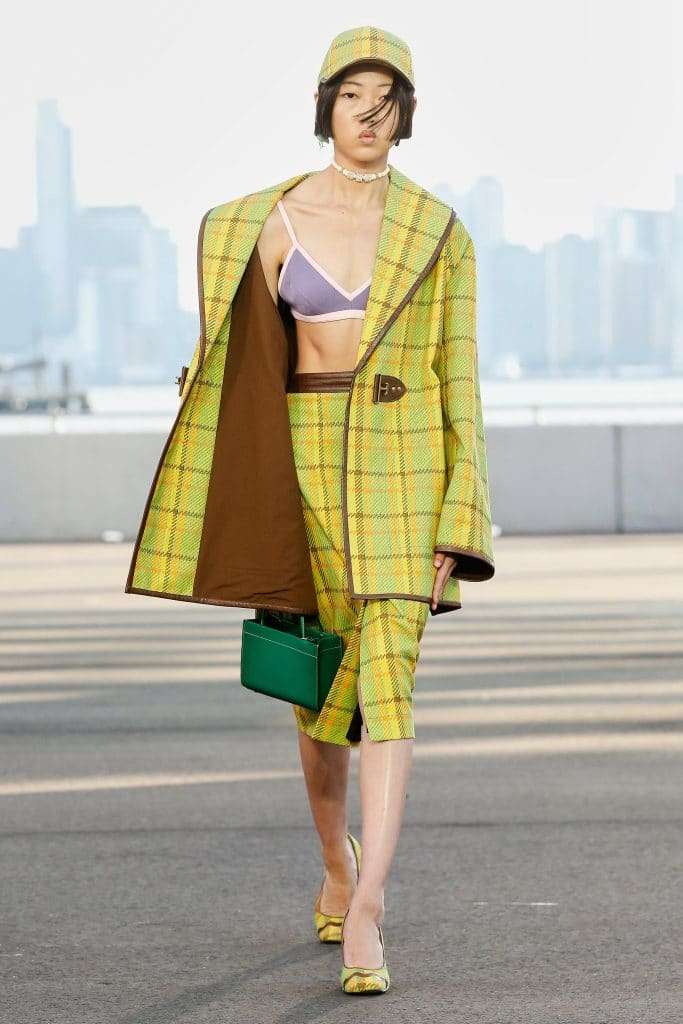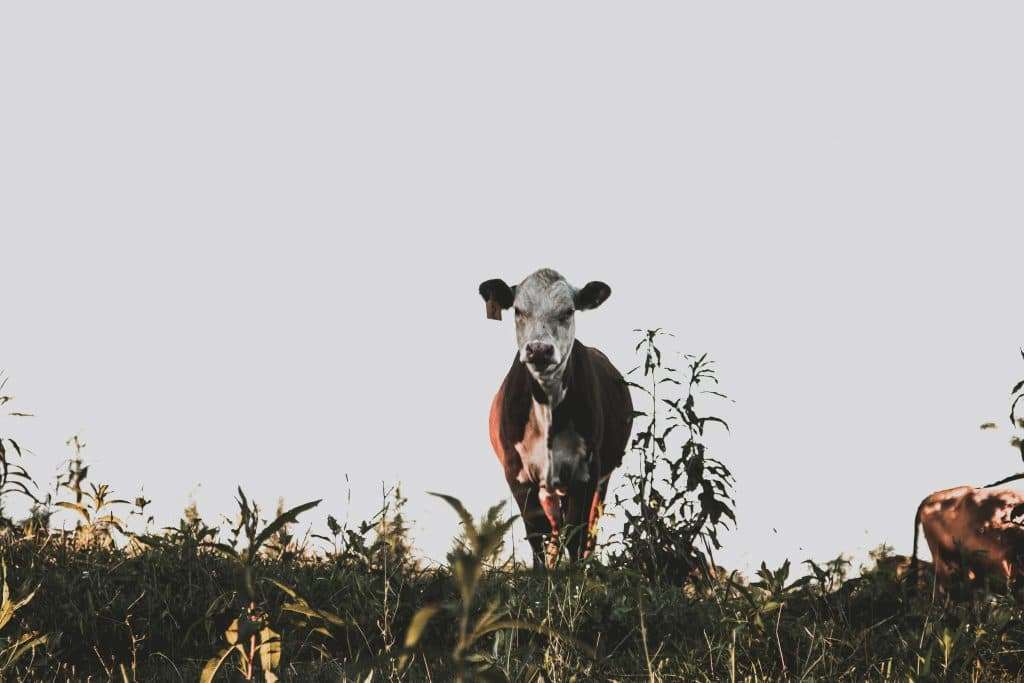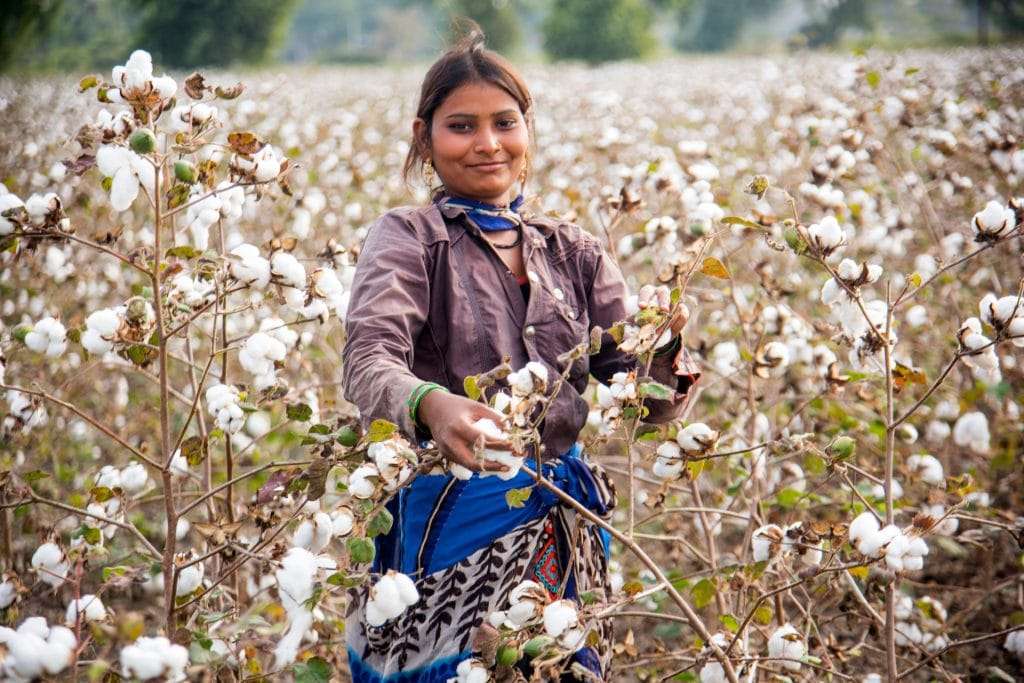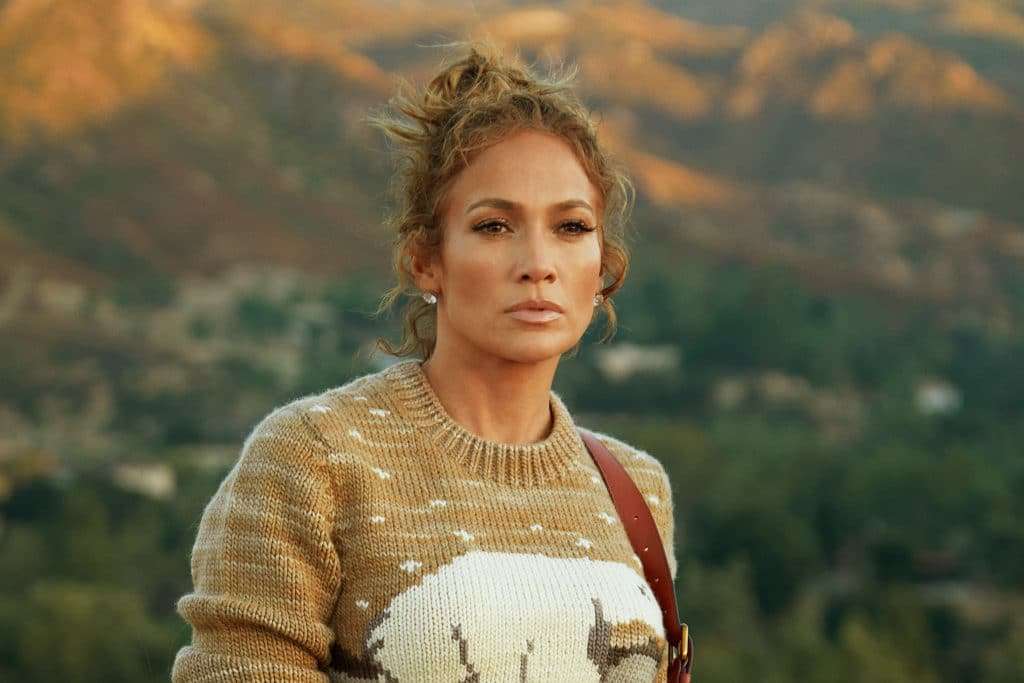As luxury fashion houses lean deeper into sustainability, regenerative agriculture is taking the spotlight.
Last year, Tapestry, the parent company to Coach, Kate Spade New York, and Stuart Weitzman, (and, now, the Capri holdings including Versace, Michael Kors, and Jimmy Choo), announced a partnership with the Savory Institute’s regenerative agriculture Land to Market Program. Tapestry said the move is part of its efforts to reduce its impact on climate change.
“We are proud to effect real and lasting change for our environment through strategic improvements in our supply chain and innovative productive offerings,” Todd Kahn, CEO and Brand President of Coach, said in a statement.
“While our Coach (Re)Loved collection gives many of our beloved bags a second life, this newly established membership with Land to Market supports the restoration and vitality of the grasslands. We are committed to further reducing our environmental impacts by continuing to engage with our supply chain, and increasing renewable energy, environmentally preferred materials, and traceability.”

Tapestry isn’t the first luxury label to partner with the Savory Institute, which is the world’s first verified regenerative agriculture operation. Gucci’s parent company Kering partnered with the organization in 2018. It was a Frontier Founder in Savory’s Land to Market program that advocates for verified regenerative sourcing solutions and the expansion of regenerative agriculture across fashion supply chains.
“Regenerative agriculture is a multi-benefit solution which supports Kering’s sustainability ambitions to mitigate our environmental impacts and deliver positive outcomes along our supply chain,” Marie-Claire Daveu, Chief Sustainability Officer and Head of international institutional affairs at Kering, said in a statement at the time. “We are proud to collaborate with Savory to pioneer innovative and nature-based solutions in fashion as part of our broader commitment to contribute to solving our industry’s global challenges around biodiversity and climate change.”
Members of the Land to Market program include Eileen Fisher, Timberland, and New Balance, among others.

“I love this [topic] because this is one of the places where we can make a positive impact,” Eileen Fisher said of the project. “Rather than just pollute less or do less harm, we can actually kind of revive the earth through the process of making clothes.”
Savory Institute is working to verify farmers, ranchers, and other raw material producers through its Ecological Outcome Verification protocol that’s able to measure the land health. It developed the process in partnership with Michigan State University, Texas A&M, and The Nature Conservancy, among others, and can tell if farmland is in a state of regeneration or degeneration. Continued improvements to soil show notable reductions in CO2.
What is regenerative agriculture?
Regenerative agriculture is indeed having a moment like organic and Fair Trade farming before it. The month-long January campaign Regenuary has successfully ridden the more popular Veganuary’s coattails—encouraging people to consume locally and regeneratively grown food for the month as a way to kickstart the year and undo holiday bingeing damage.
There’s good reason to emphasize the practice; regenerative agriculture takes a holistic approach to farming that considers topsoil a commodity as much as the medium from where its more salable commodity items grow. Minimal disruption of soil, also called no-till, encourages microbial community populations to thrive. Cover crops and crop rotation along with adding compost and manure to the soil help not only improve plant growth, but improve soil’s other critical function: increased carbon sequestration.

Soil tilling helped revolutionize agriculture, but it’s also a big problem for the climate. According to non-profit Fibershed, the earth’s soil has lost nearly 140 billion tons of CO2 through tilling, churning, and overgrazing, among other issues. There’s about 110 billion tons of CO2 in the atmosphere currently, meaning that if all the soil on the planet was healthy, it could sequester more than all of the carbon causing our climate change issues.
Carbon is a top consideration for the fashion industry under scrutiny for its large carbon footprint—about ten percent of global emissions—as well as its toxic wastewater, animal welfare and labor issues, among others. Regenerative agriculture wipes the slate clean on nearly all of these. From the lack of synthetic chemical fertilizers to empowered and protected farmers, groups like the Savory Institute are out to ensure the practice is more than just a shiny buzzword. It has weight.
In 2021, California-based Co launch Natural World — its first regenerative collection. Los Angeles dress label Christy Dawn has embraced the practice after years of hanging its sustainability hat on sourcing from deadstock material.
“For the first five years of our brand, we were super proud that we haven’t been part of the problem,” Aras Baskauskas, Christy Dawn’s CEO and winner of the 12th season of the CBS reality show, Survivor told Vogue in 2020. He’s talking about the deadstock materials the brand historically relied on for its products. “But it weighed on us that we weren’t part of the solution, either.” That led Christy Dawn to invest in sourcing regenerative agriculture materials in addition to its use of deadstock.

Deadstock is also a buzzy word, especially as luxury fashion brands increase their reliance on it in order to reduce waste. While it promotes a circular economy, it doesn’t address the material problem if deadstock includes plastic-based materials such as polyester, which contribute to ocean pollution, among other issues. Deadstock is a stop-gap in the fashion industry’s addled value chain, but it’s not a long-term solution.
The regenerative fashion shift
Regenerative agriculture might be the solution, though. Organic agriculture, particularly in India’s cotton industry, has come under scrutiny over fraudulent certifying agencies and verifications. Regenerative agriculture is proving to be a viable solution there, too. The problem with fake organic cotton also speaks to the issue of mass production, arguably fashion’s biggest challenge. For brands like Co and Christy Dawn, capsule collections are the norm. And that lends itself to more controlled value chains. It’s where regenerative agriculture farmers can flourish.
“Land to Market is committed to improving the entire ecosystem with regenerative agriculture, which provides benefits for the soil, water, air and animals,” said Chris Kerston, co-leader of Land to Market. “Humanity can only reach critical climate goals with bold action and partnership with the business community.”
Savory Institute says it’s building more than just a better agricultural system; it’s “giving a voice to the land.”
“This isn’t big enough to change the whole world, but it’s big enough to change our own world,” Baskauskas said. “And it’s big enough that if we do it really well and get the right people writing about it, much bigger brands will jump on board, and consumers will demand it.”

Also leading the charge is Textile Exchange, which counts Kering, J.Crew and Madewell, among its partners. In July, it introduced a fresh framework mapping out various indicators to analyze and assess regenerative agriculture initiatives.
Textile Exchange says real regenerative agriculture is a localized, results-driven system strategy, not a ‘one-size-fits-all’ roster of methods. The organization is on a mission to retain the core essence of regenerative agriculture as the fashion industry embraces it. By offering a range of indicators tailored to distinct regions and farm types, it seeks to uphold the “context-based nature of regenerative agriculture”, while establishing a pathway for continuous development and thorough documentation of the progress.
“The Regenerative Agriculture Outcome Framework addresses several important gaps across the industry, most notably the need for a centralized reference point on what it means for a regenerative program to truly be inclusive of outcomes and not just practices,” Beth Jensen, director of impact for the Climate+ strategy at Textile Exchange, told Vogue Business.
She says it also addresses the need to standardize how outcomes are measured, as well as “the need for a researched set of outcomes to use in the Textile Exchange unified standard, which seeks to more directly link practices to outcomes.” Brands also need to be able to explore different types of regenerative agriculture projects that best suit their needs.
According to Textile Exchange, the framework “answers the call for the industry to take an approach that includes the development of equitable partnerships with farming communities.” And that’s critical to removing the pressure from the producers alone, it says. “We believe that creating further alignment on which indicators to track, and laying some initial groundwork on how this might be done, is a critical step to speed progress on regenerative agriculture in a way that supports farm communities.”
Related on Ethos:


